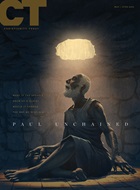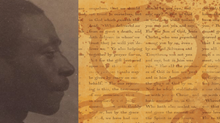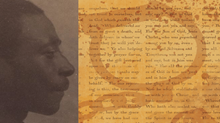A Bold, Fresh Study Reprinted and Affordable

A republished academic study by Matthew J. Thomas called Paul’s “Works of the Law” in the Perspective of Second Century Reception, formerly an expensive published PhD in the academic WUNT series but now available from IVP, contends that analysis of the major texts of the 2d Century leads to a singular conclusion: the “new” perspective is earlier than the “old” perspective, and he calls this 2d Century view the “earlier” perspective.The book should be in every theological library.
The new edition has a foreword by Alister McGrath, endorsements from NT Wright, John Barclay, Lynn Cohick, Matthew Levering, and Doug Moo. That enough to persuade you this book is making an impact?
Thomas is not providing some comprehensive endorsement of the new perspective and neither is this book simply a piece of polemics. Rather it is a patient examination 2d Century evidence with contemporary questions in mind.
What were the 2d Century texts talking about with works of the law?
This early conception of works of the law can be summarized as follows. The law in question is the Mosaic law, which was delivered to the hard-hearted nation of Israel following the apostasy at Sinai. The principal works of this law that come into focus are circumcision, Sabbath and other Jewish calendar observances (such as new moons, feasts and fasts), sacrifices, and laws regarding food, with a focus on the temple and Jerusalem occasionally noted as well. The practices of the Mosaic law are consistently distinguished from good works more broadly, whether these be the natural and universal pious deeds that were performed by Abraham and the righteous patriarchs, the works of the Decalogue, the acts of mercy enjoined by the prophets, or the commandments of Christ and works of his covenant, such as baptism and keeping the Lord’s day.
And these conclusions lead to the rather important conclusion about works of the law as a form of connecting with the people of Israel/Jews/Judaism.
The practice of these works signifies identification with the Jewish people, the Jewish covenant, and “Judaism,” the manner of life and worship prescribed in the Mosaic law. The Jewish nation, covenant and praxis are so closely linked that each can stand as a synecdoche for the others; to be a part of this nation means to be a member of their covenant, and to live and worship according to its dictates. The practice of these works also represents a corresponding move of separation from the Gentile nations. These works are practiced because salvation is believed to be tied in with the election of the Jewish people, which one enters by observing the Jewish law. From a Christian salvation-historical perspective, it can also be said that practicing these works identifies one with the period before Christ’s advent, and with the juvenile and hard-hearted condition of humanity before its renewal by Christ.
Here is his conclusion on which perspective more closely aligns with the 2d Century evidence, and it is so important to repeat what is often ignored — namely, the “new” perspective is actually new perspectives and not a singular perspective in which the principal thinkers agree all the way down.
In summary, the early perspectives on works of the law are found to align far more closely with the so-called “new” perspective than the “old” perspective, particularly with respect to the meaning and significance of these works. On these issues, the alignment between early and new perspectives is such that one can regard the “new” perspective as, in reality, the old perspective, while what we identify as the “old” perspective represents a genuine theological novum in relation to the early Christian tradition.
Now to the differences:
However, this close alignment does not hold on the question of why these works are opposed, as the distinctive emphases of Sanders and Dunn find little patristic support, and only Wright’s reasoning carries substantial correspondence among these early sources. Moreover, it is noteworthy that, notwithstanding his occasionally undiplomatic language, it is Wright who does the most among new perspective authors to incorporate old perspective concerns in his arguments, particularly with respect to Torah’s inability to address the underlying issue of human sinfulness. If an “old perspective” adherent – perhaps more likely from the Reformed than the Lutheran tradition – finds Wright’s arguments to sufficiently account for the underlying anthropological reasons why works of the law cannot justify, then they are likely to be satisfied with early perspective reasoning on this issue as well.
Thomas offers some observations on how this early perspective fits with Paul’s own letters, and his conclusion is profoundly salvation-historical or apocalyptic (depends who is talking), namely, that in Christ all things are new.
First, these sources would suggest that in rejecting the works of the law, Paul’s focus is on the concrete issue of the place of the Torah in the Christian’s life, and not on broader questions of obedience to a moral law or concerns about works in general.
Second, in light of the early patristic testimony, it appears that Paul’s rejection of the works of the law was not original to him. … Rather, it appears that Paul is responding to the law of Christ that is held in common with the other apostles, and though his apostleship means that he indeed acts as a steward of this law, it is Christ who redefines and intensifies, not Paul.
This leads to the third point. A major theme in this study is that the early patristic sources frequently make reference, whether directly or indirectly, to the law of Christ as a primary reason why these works of the Mosaic law are no longer binding. … Rather than being rejected because of Paul’s experiences or their exclusive social function, these works represent the major points of discontinuity between Moses’ law in the old covenant and Christ’s law in the new, and thus naturally recur as flashpoints in contexts where the validity of one dispensation or the other is in question.
Finally, these early perspectives would suggest that while these works are indeed flashpoints, the conflicts over works of the law are not, at heart, about works of the Mosaic law at all, but rather about the identity of Jesus as the Messiah.
Jesus Creed is a part of CT's
Blog Forum. Support the work of CT.
Subscribe and get one year free.
The views of the blogger do not necessarily reflect those of Christianity Today.




















